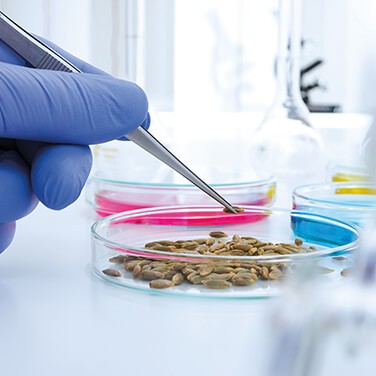Will GMO Labeling Change Buying Habits?
By Lynne Lescott
Food manufacturers have until 2020 to comply with a U.S. federal law that requires products containing genetically modified organisms (GMOs) to be clearly labeled. It’s a development many consumer advocates claim as a victory, but whether it will produce meaningful change remains to be seen.
From Diabetes to Denim
Products made with materials from GMOs are not especially new or unusual. Human insulin produced by GMOs, which was the first medical product approved by the FDA (1980), is routinely prescribed for people with diabetes. The insulin created through GMOs has significantly reduced treatment costs and eliminated the adverse effects of using porcine insulin.
Other non-food GMO products include the cotton in our blue jeans, the multivitamins in our medicine cabinets, and the stain-lifting laundry detergent in our washing machines. More than forty years ago, a variety of consumer groups and others protested the FDA’s approval of GMO insulin, a reaction echoed by the lobbying efforts of today’s consumer groups that support labeling foods that contain GMOs.
Voices from organic-lifestyle groups have also been raised in opposition to GMO-derived-clothing and products that are not required to carry GMO labeling.
Hardy Crops
For more than 20 years, crops have been bioengineered to produce certain desirable characteristics; the resulting plants repel destructive pests or resist the effects of herbicides and other chemicals. The genetic modifications conducted in the lab are precise and measured, and outcomes are predictable and repeatable.
Modified food ingredients are now found in an estimated 60 to 70% of processed foods in the U.S., including those that appear on the shelves of grocery stores. Potato chips, soup, cereal, soda, and many other processed foods include GMO-derived ingredients from corn, soybeans, canola, sugar beets, potatoes, and other GMO crops.
GMO Label Facts
The new rules that go into effect in 2020 require food products to be labeled as “GMO” only if the primary ingredient is GMO-derived. Foods may not be labeled if only secondary ingredients contain GMOs, and the labels won’t explain how or why the food was modified.
The U.S. Department of Agriculture is still developing acceptable GMO label components, but three labeling options are likely:
- A GMO disclosure statement
- A new bioengineered (BE) icon
- A quick response (QR) code that takes users to a website with more information
Some manufacturers of non-GMO products currently label products as GMO free. Meanwhile, some industry experts suggest that labels on GMO-free products like oats, which have no GMO equivalents, could mislead consumers about the benefits of those foods.
Will We or Won’t We?
Heightened awareness of GMOs does not change the fact that foods containing GMOs have not been shown to have negative effects or cause harm to humans or animals. Still, the question remains: how will Americans respond to GMO labels? Neither shoppers, nor food manufacturers, nor GMO activists pro or con are ready to predict whether shopping behaviors are likely to change, or by how much.
